“Did you put up your post today? How many times was it read?” is not what The Reds, Pinks & Purples ask in one of their songs – rather, it is “Did you put up your song today? How many times was it played?”. But of course, with this slight adaptation, it also works for blog posts and their writers, and allows me to plug another nice song by this underrated artist, before switching to birds.
The scientific species name of the Golden-throated Barbet is franklinii, commemorating Capt. Sir John Franklin (1786-1847), an English Arctic explorer famed for the ill-fated attempt on the North-west Passage (HBW).
That expedition is now mostly known for its failure and for the proven cannibalism some of its members resorted to. The Golden-throated Barbet has already launched several protests asking for a name change as it does not want to be associated with cannibalism – however, so far without success.
The HBW section on this species’ behavior mostly repeats the phrase “more information needed”. Though of course scientists, hungry for grants and topics, say that all the time.
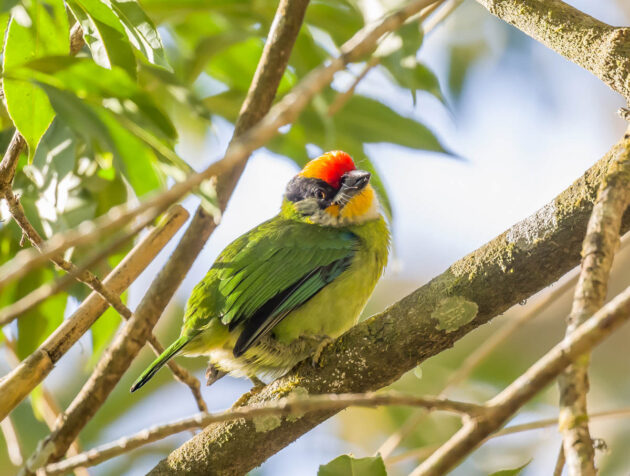
While the HBW states that it tends to replace other similar-sized species such as the Blue-throated Barbet at higher elevations, at Tongibiguan, I saw both species in exactly the same tree. Maybe a source more focused on birds than the HBW might have provided more accurate information.
Said Blue-throated Barbet – maybe lacking an altimeter – indeed could be seen very close to its family member at Tongbiguan.
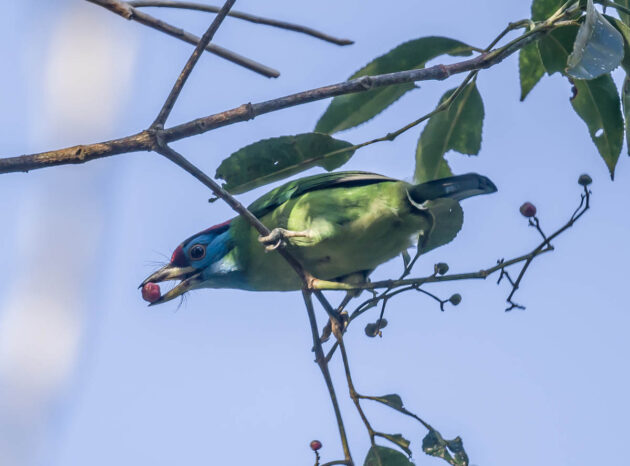
It is much more common in easily accessible areas, leading to a much longer HBW entry (the “looking for the keys in the area with the best light” joke again, if you know what I mean).
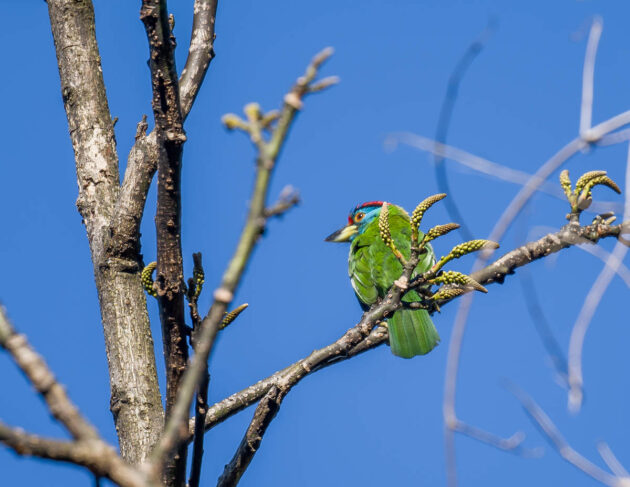
Bec Crew, a self-declared “Sydney-based science communicator with a love for weird and wonderful animals” finds that “The blue-throated barbet is ridiculously good-looking”
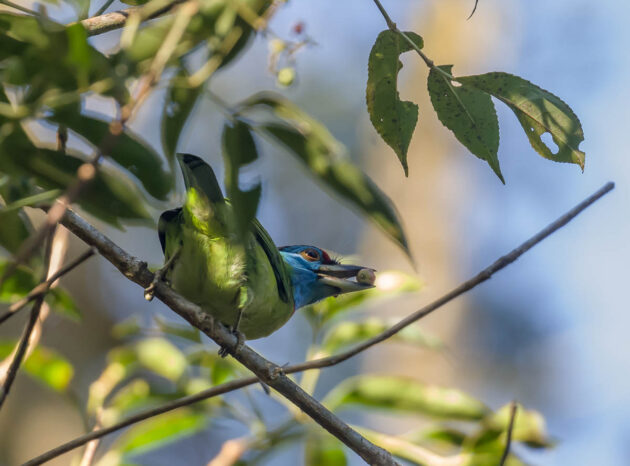
Another vaguely scientific paper on the Blue-throated Barbet seems to deal more with the impact of Covid on Indian villagers than on the bird itself: “All the social, official, commercial and institutional activities were prohibited for the people. Apart from the household work most of the people got themselves busy in the unproductive work like watching TV and using mobile phone. For morning and evening work we were compelled to use only the lawn and backyard premises of the household. During our walk we have interacted with 35 species of birds. We became fond of Bluethroated Barbets (Psilopogon asiaticus) during our walk and documented the roosting, nesting, foraging behaviour of the Blue-throated Barbets“.
Though I have to say I like the bit about “unproductive work like watching TV and using mobile phone”.
The Bronzed Drongo certainly does not like to be called unproductive, pointing out that it sometimes is the nucleus species for mixed-species flocks (source).
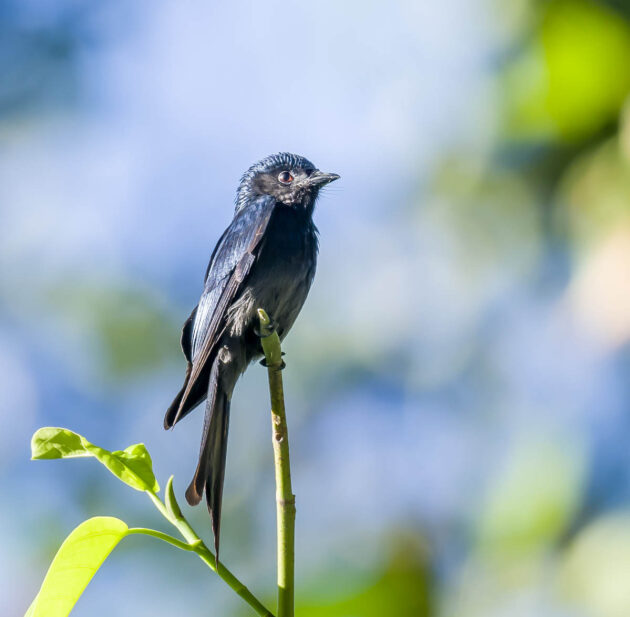
Strangely, while according to the HBW, it mainly feeds on insects, it recently got kicked out of Season 14 of the American TV series “Jungle Camp” for refusing to eat insects. Ok, I made that up.
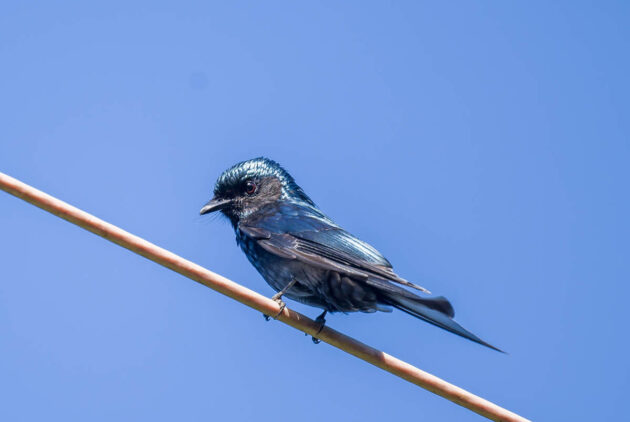
It is also quite good at mimicry, imitating species such as the Crested Serpent-eagle, the Javan Cuckoo-shrike and the Orange-bellied Leafbird.
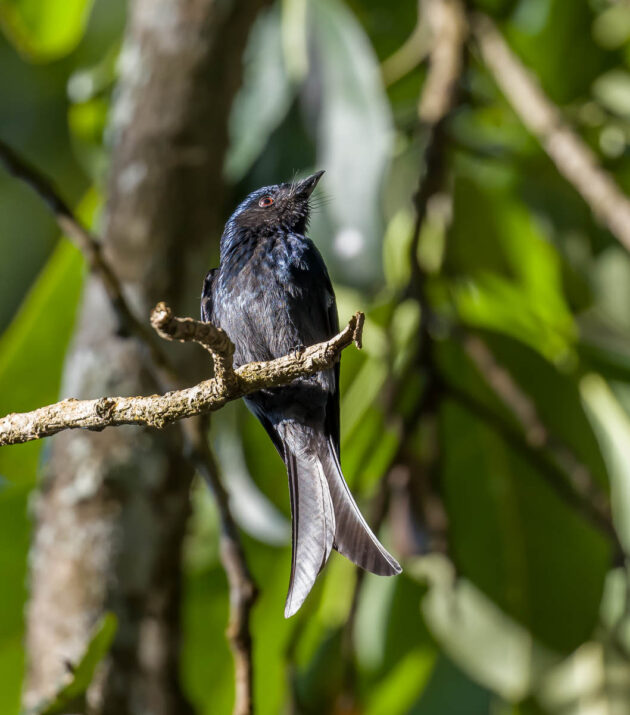
The Orange-bellied Leafbird tends not to be very amused when hearing a Bronzed Drongo imitating it.
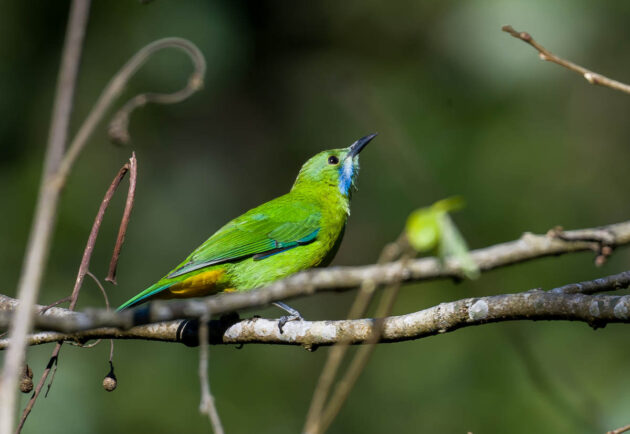
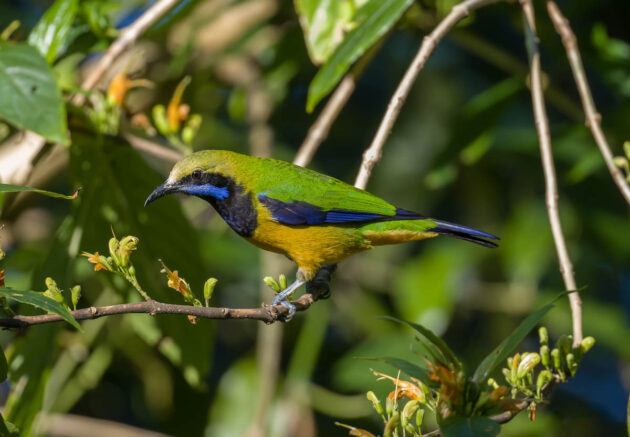
A paper on the Chestnut-vented Nuthatch titled “Nest-Site Features and Breeding Ecology of Chestnut-Vented Nuthatch Sitta nagaensis in Southwestern China” has 8 authors. Who together examined the amazing number of 35 nuthatch nests (so each author presumably examined 4-5 nests and still got a paper out of it – good work if you can get it).
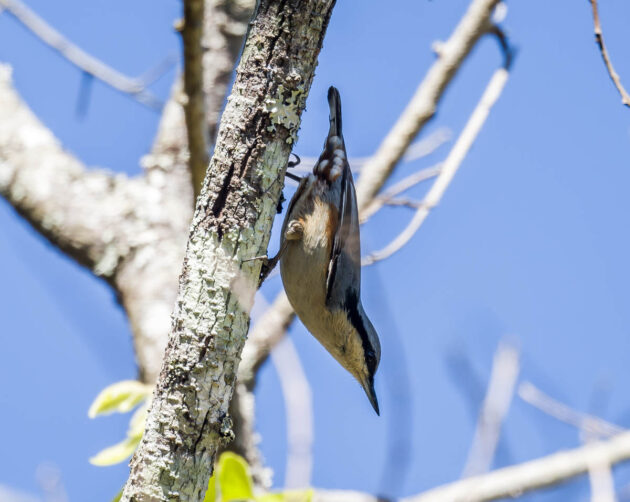
The abstract quickly shifts from the boilerplate general “why what we do is somehow important”, namely:
“The breeding ecology of birds is the cornerstone of bird life-history theory, and breeding success directly affects the survival and development of populations.”
to the much more specific, less life-changing but much more relevant
“We studied the breeding ecology of a secondary cavity-nesting bird, the chestnut-vented nuthatch”.
In the future, I recommend the authors should start their abstract even earlier, maybe something about how life has fundamentally changed the history of our earth, and how birds are a part of this shift. Then, on to nuthatches.
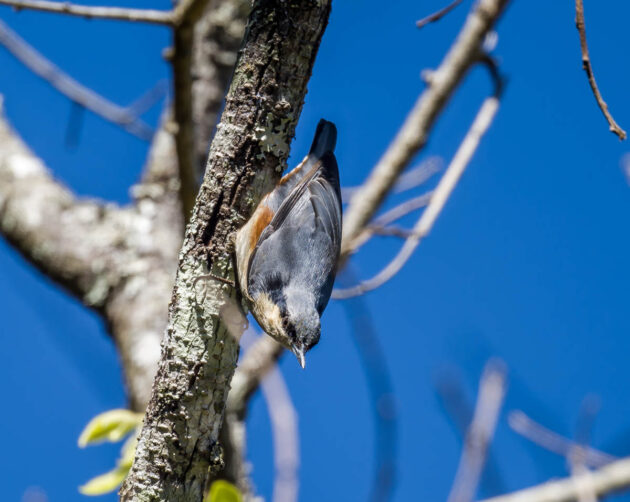
And yes, of course you missed my reference to somebody determining the mitochondrial genome of the species. How could I have forgotten, given the excitement this paper gave me?
This post features several bulbuls, starting with the Black-crested Bulbul.
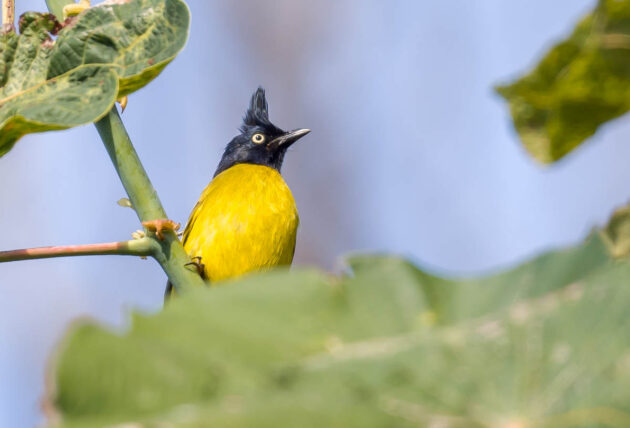
A paper shows a photo of a first-generation hybrid of this bulbul with a Red-whiskered Bulbul while another one reports on the (apparently interesting) sighting of a subspecies previously not observed in China. According to the authors, this warrants “a discussion on the classification and distribution of Pycnonotus flaviventris.” Oh my, are we important.
Another bulbul with a crest is the Crested Finchbill, though by adopting the name finchbill rather than bulbul, it seems to want to keep a certain distance from its relatives (I can understand that feeling very well).
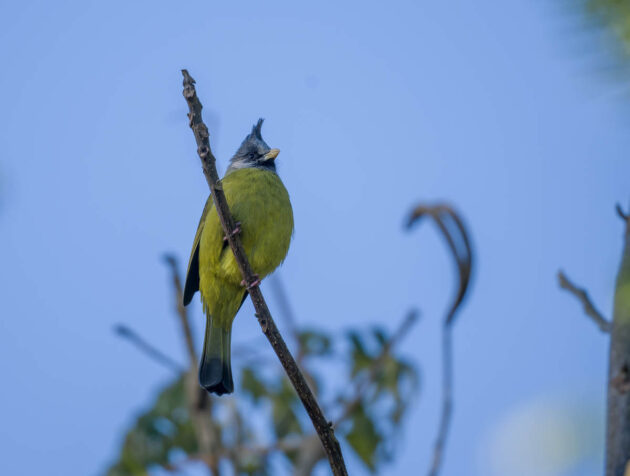
A rather not very interesting fact about this species is that the scientific name canifrons – rather than hinting at the bird’s crest – refers to the species’ grey forehead.
While the HBW describes the Flavescent Bulbul as a “common and rather familiar bulbul”, that does not mean there is much information available on the species. Flavescent apparently means golden-yellow – you may try using it in your next everyday conversation if you want to impress people, though it might be hard to find a suitable topic allowing this unless you are a gold dealer.
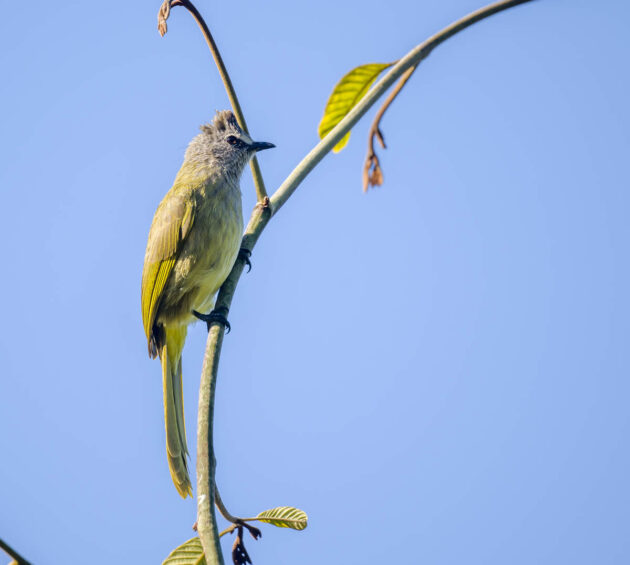
In terms of overall color scheme, the Grey-eyed Bulbul is not that much different. But of course, the grey eyes are something the species is very proud of. And it is not very happy that these beautiful grey eyes are not reflected in its rather vague and nondescript species name of propinqua, “neighboring, similar, related” (to what?).
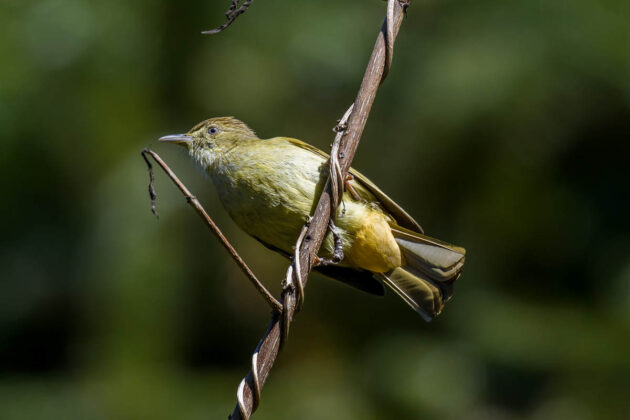
Reportedly, any mention of the Red-vented Bulbul in Florida’s schools may soon be illegal as it is thought that the specific reference to the hind parts of the species may lead vulnerable children toward early sex.
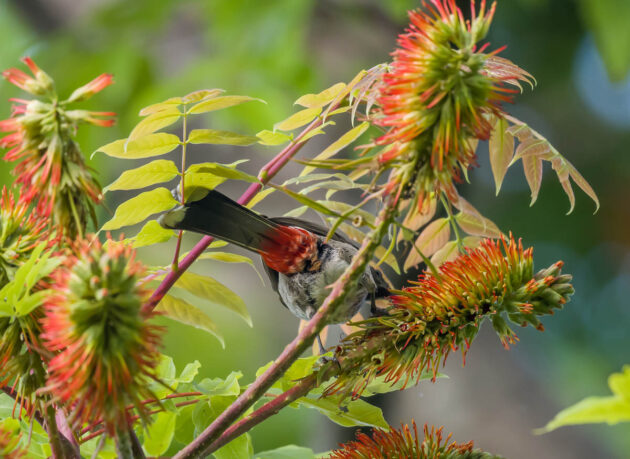
Maybe Floridians will then use the scientific name cafer – though with its origin in the terms Kaffir, Caffre, or Caffer applied to some indigenous peoples in South Africa (HBW), this may not be a good choice either. At least in the German language, the term “Kaffer” is a derogatory term for dark-skinned people. But maybe this will concern some Floridians less.
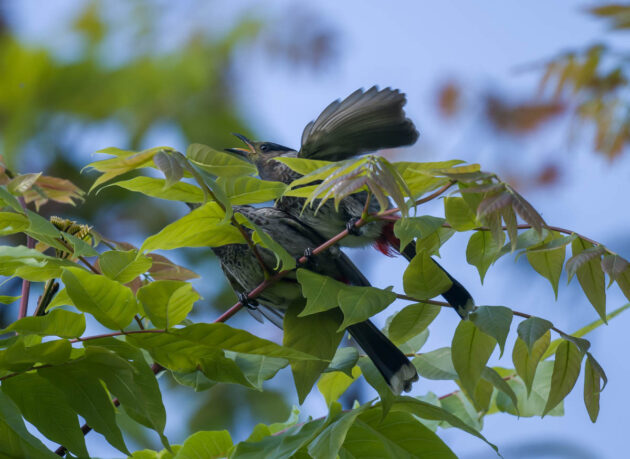
The HBW has a helpful editor’s note dating from 2016 stating that the species account is still being edited. As the species is rather common, it is unlikely it will go extinct before this update happens.
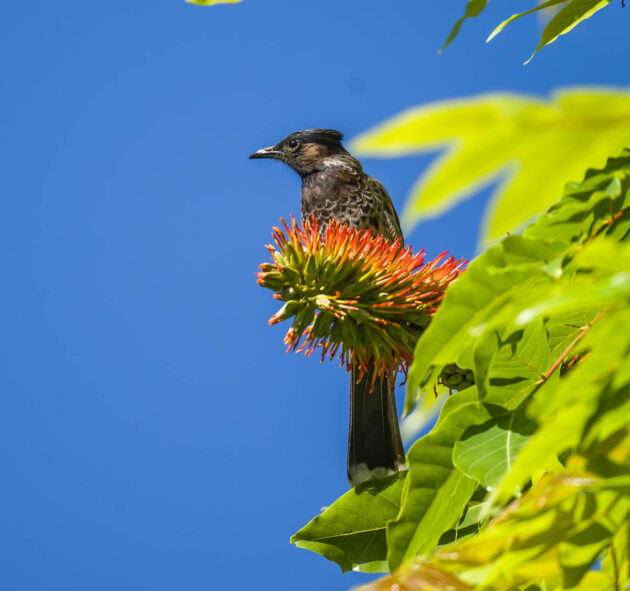
In contrast, the HBW entry for the Striated Bulbul was updated as recently as October 2023. If you dislike birdsong, maybe this is the right bulbul for you as the entry describes the species as “less vocal than most bulbuls”.
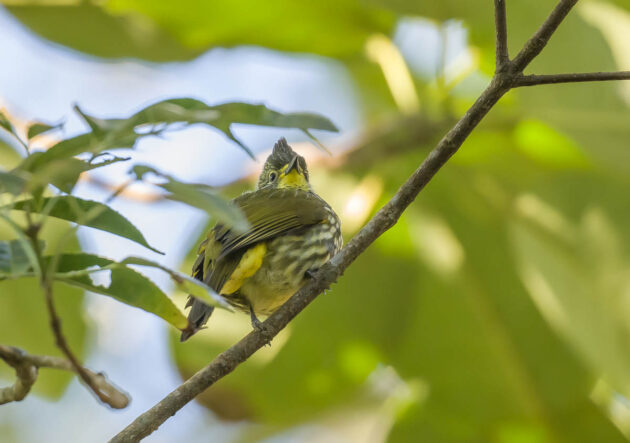
Unfortunately for such a pretty bird, there is almost no information on the Slaty-blue Flycatcher.
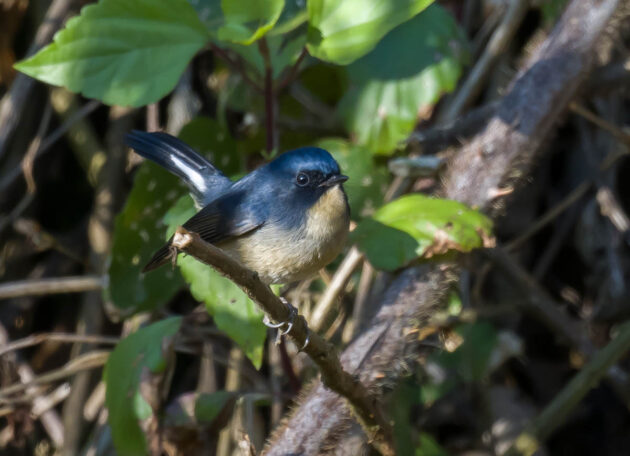
Presumably, the scientific species name tricolor refers to the combination of blue, brownish and white of the male. Not very exciting information, I know. But unfortunately, Sir Edward Tricolor (1797-1866), the eminent Scottish naturalist and amateur poet, never existed.
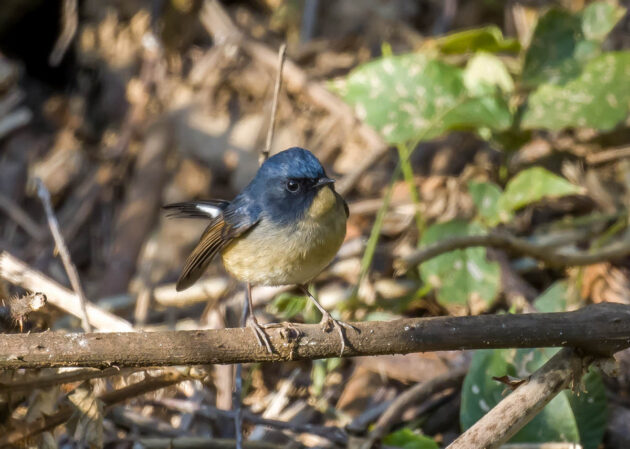
I think this is a Fire-tailed Sunbird, maybe a juvenile male?
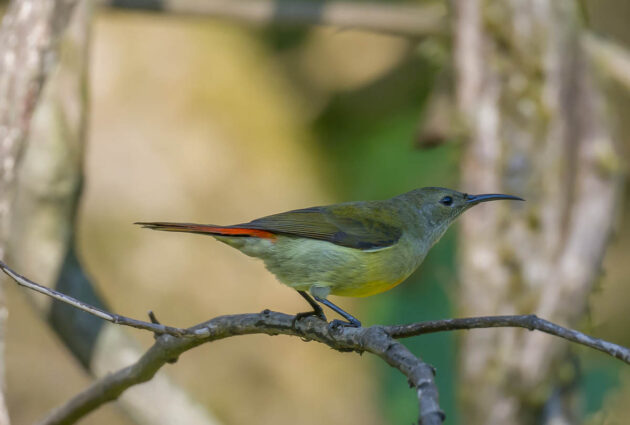
Apparently, this sunbird is kind of the mountain equivalent of the Fork-tailed Sunbird. In terms of breeding, this means that “the high-altitude Fire-tailed Sunbird tends to produce smaller clutch sizes with prolonged nestling periods, and higher feeding frequencies than the low-altitude sunbirds” (source). Does that mean that families in Florida should on average be larger than in Colorado?
Another paper lauds the dedication of female Fire-tailed Sunbirds as they prioritize incubation rather than self-feeding when it is coldest (source).
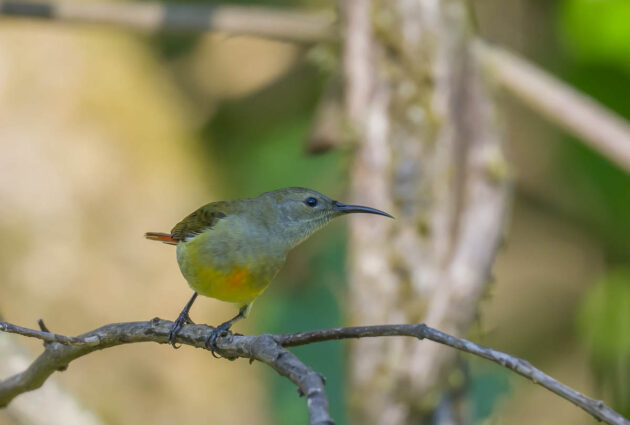
Here is another sunbird species – Mrs. Gould’s Sunbird – presumably also an immature male.
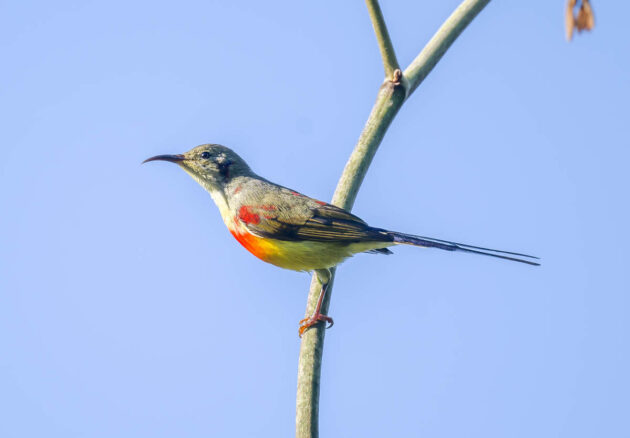
Yearning to look like an adult.
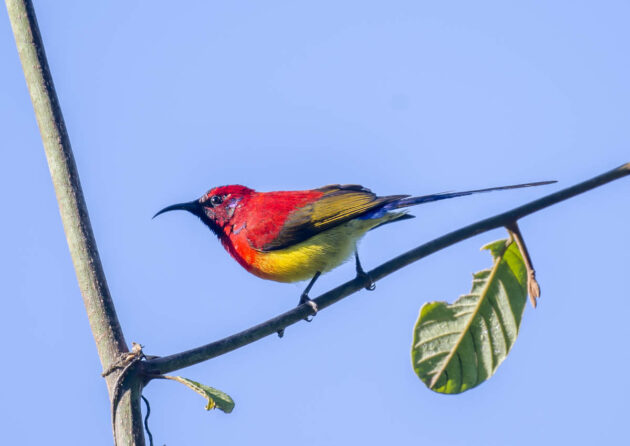
The Fulvous breasted Woodpecker to me looks like a very conventional woodpecker. However, one online source disagrees, gushing “Welcome to the captivating world of the Fulvous-breasted Woodpecker, a medium-sized bird with a fascinating mix of colors and patterns. This avian marvel, belonging to the family Picidae, is a sight to behold, especially for any dedicated bird lover. Its distinctive black and white upper parts contrast beautifully with its buff underparts”.
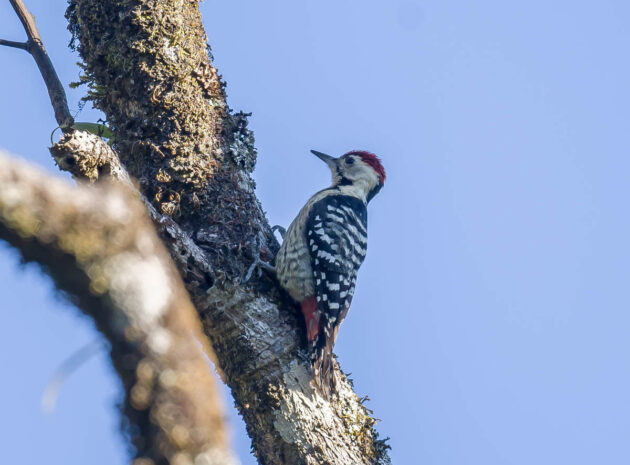
More importantly, the source answers the question every birder really wants to ask: Does the bird comfortably fit in a photo?
“The Fulvous-breasted Woodpecker measures a medium-sized bird, with its length generally fitting well within the confines of a regular bird image name or bird PNG.”
It then slightly enigmatically continues
“If you’re a bird lover, size may be necessary when considering which species to seek out during your bird migration adventures or just visiting a bird sanctuary.”
A bit similar to the beloved Nanhui visitors asking birders there: “Are there any big birds here?”.
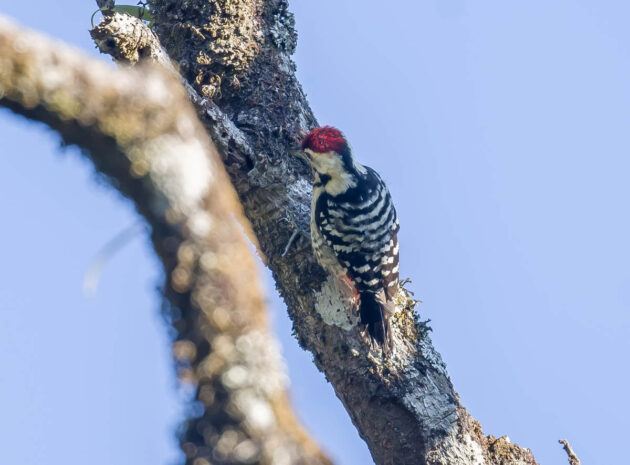
So, most likely the Grey-headed Canary Flycatcher would be out of scope for them.
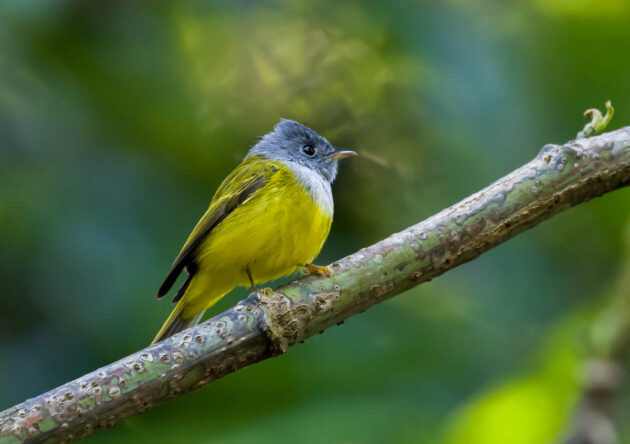
The person who gave the Grey Sibia the scientific species name gracilis (slim, slender) presumably did not see the photos below. Interestingly, the illustration in the HBW makes the bird look even less slim.
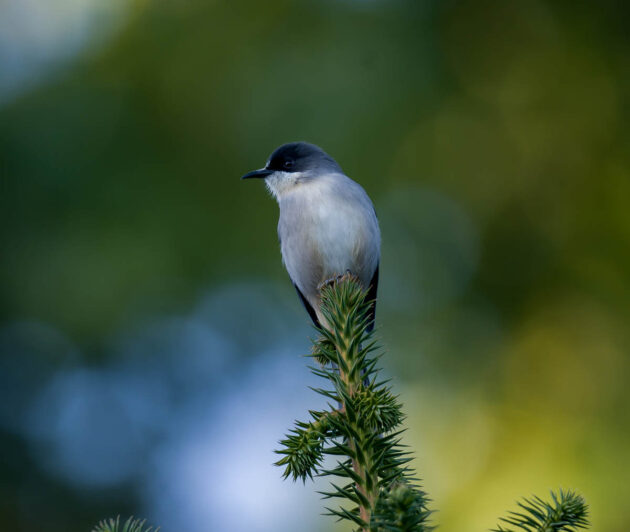
While the HBW describes their presence in China as “very local”, they seem to be very common at Tongbiguan.
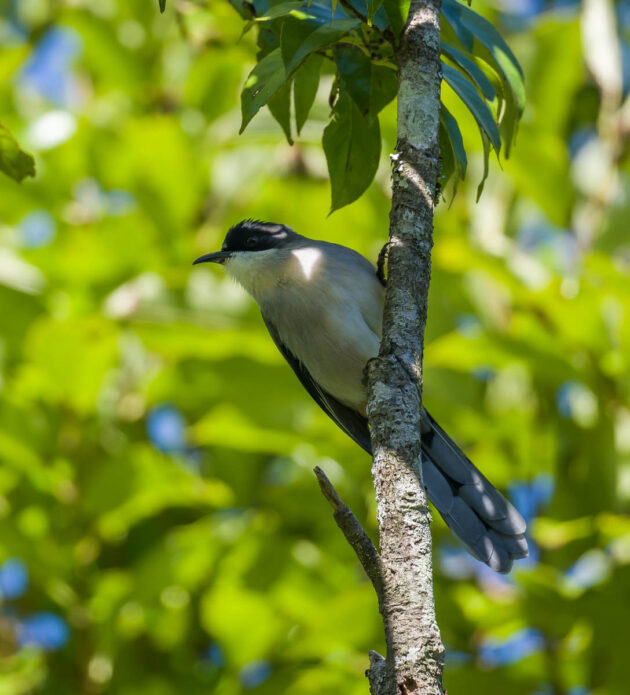
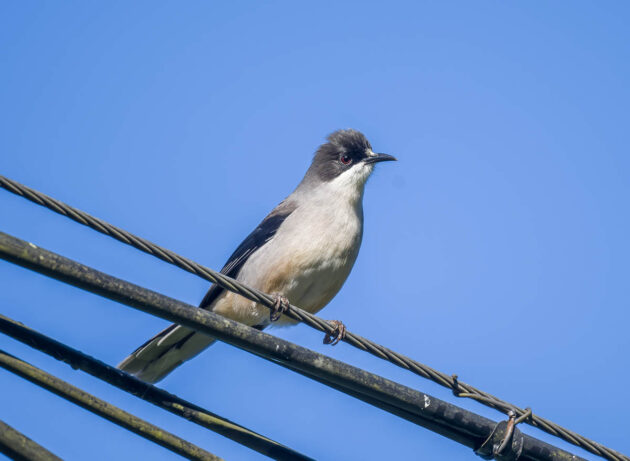
The facial expression of this Hill Prinia is that of a person in the market for a second-hand car who knows he is about to be cheated.
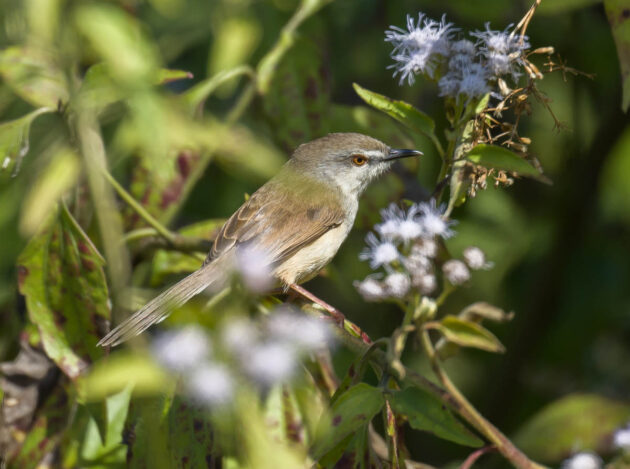
A flowering roadside tree turned into an impromptu meeting place for several bird species including Hair- crested Drongo …
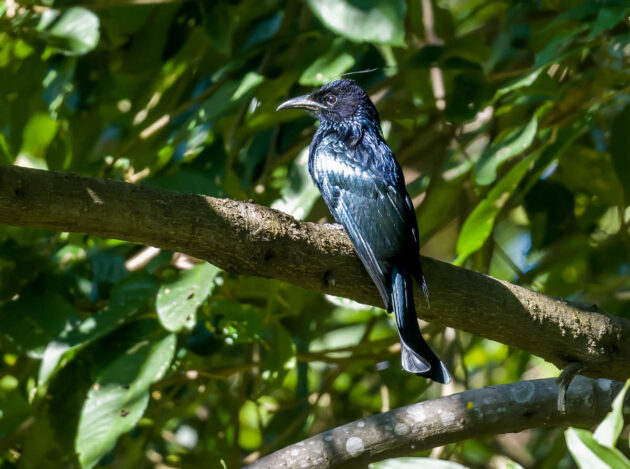
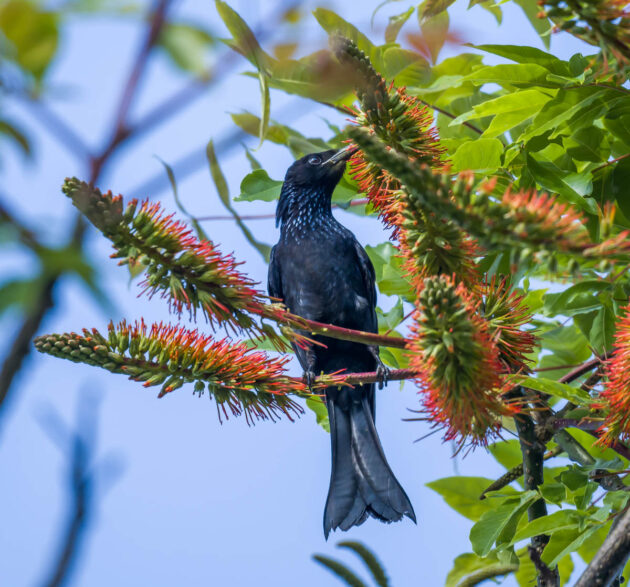
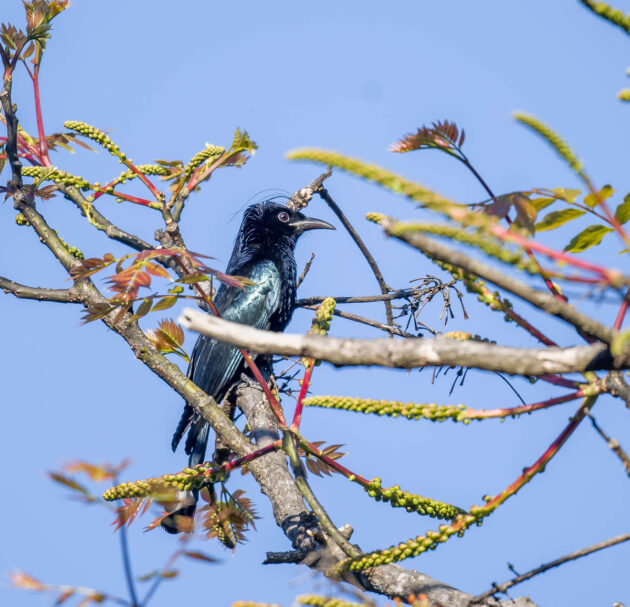
… and Streaked Spiderhunter.
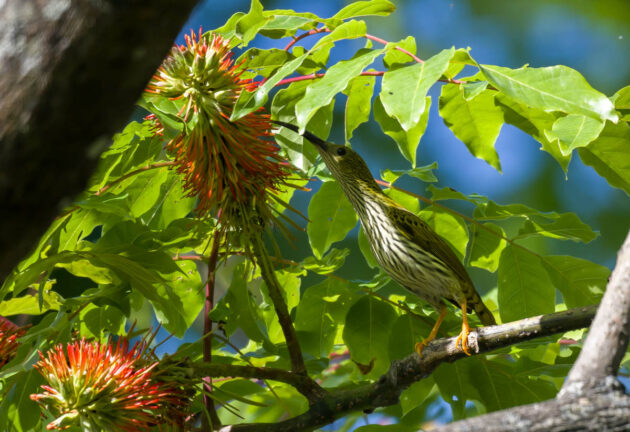
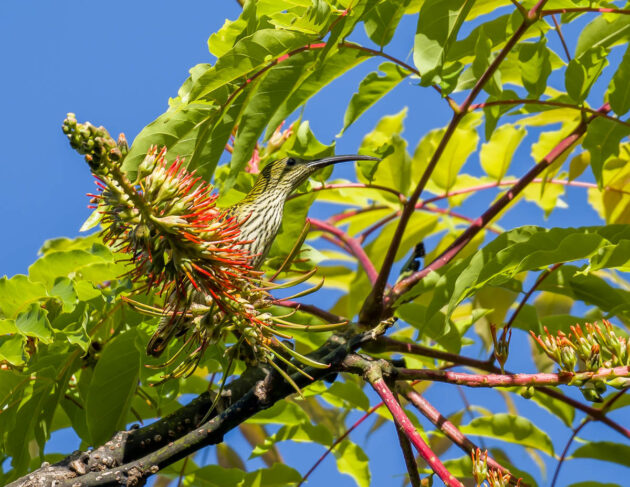
A report describing the nest of a Yellow-bellied Fantail can be found here (after a slightly obnoxious procedure of registering etc.). But the bird on the photo below looks much cuter.
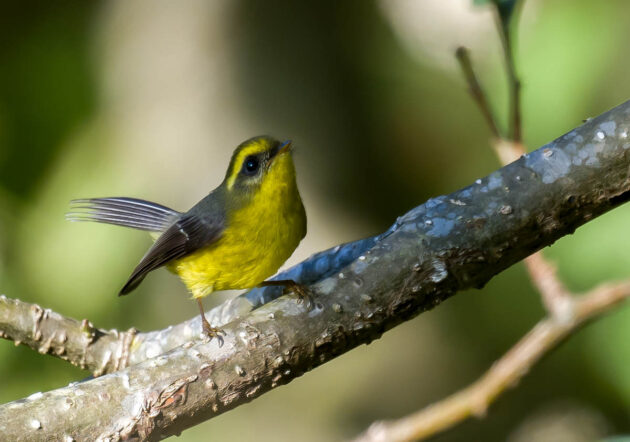
Pretending to be an intellectual, I will end this post by mentioning one of my favorite stories by German writer Heinrich Boll (or Boell), one with the appealing title “On being courteous when compelled to break the law” (I like the German title even better “Höflichkeit bei verschiedenen unvermeidlichen Gesetzesübertretungen”). In which he discusses ways to politely rob a bank or desert from the army. It also contains one small paragraph that has always been self-evident to me: “[W]hen dealing with people of either sex who regard themselves as our inferiors … one must use a slightly more subdued, more restrained tone of voice than when dealing with those who regard themselves as our superiors”.
Source link
Facebook
Pinterest
Twitter
LinkedIn

